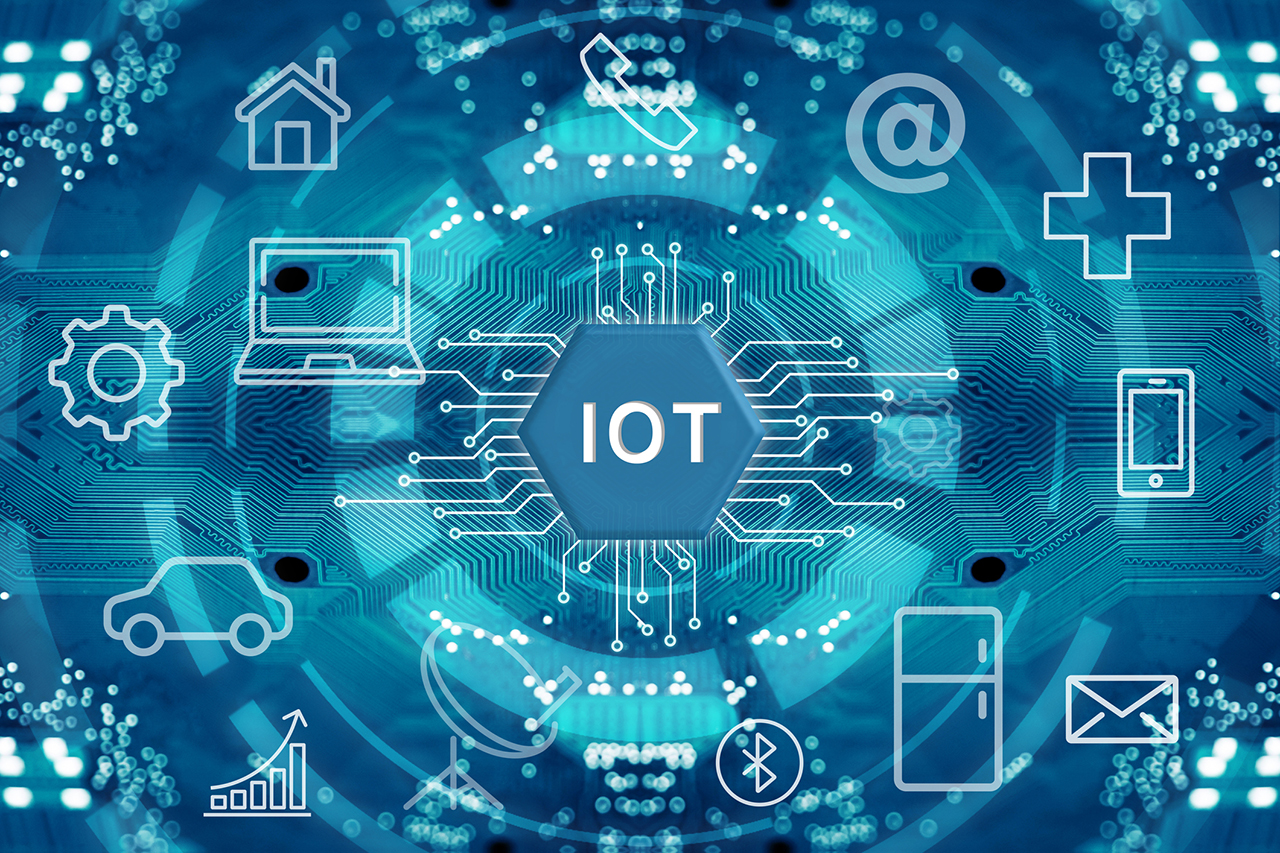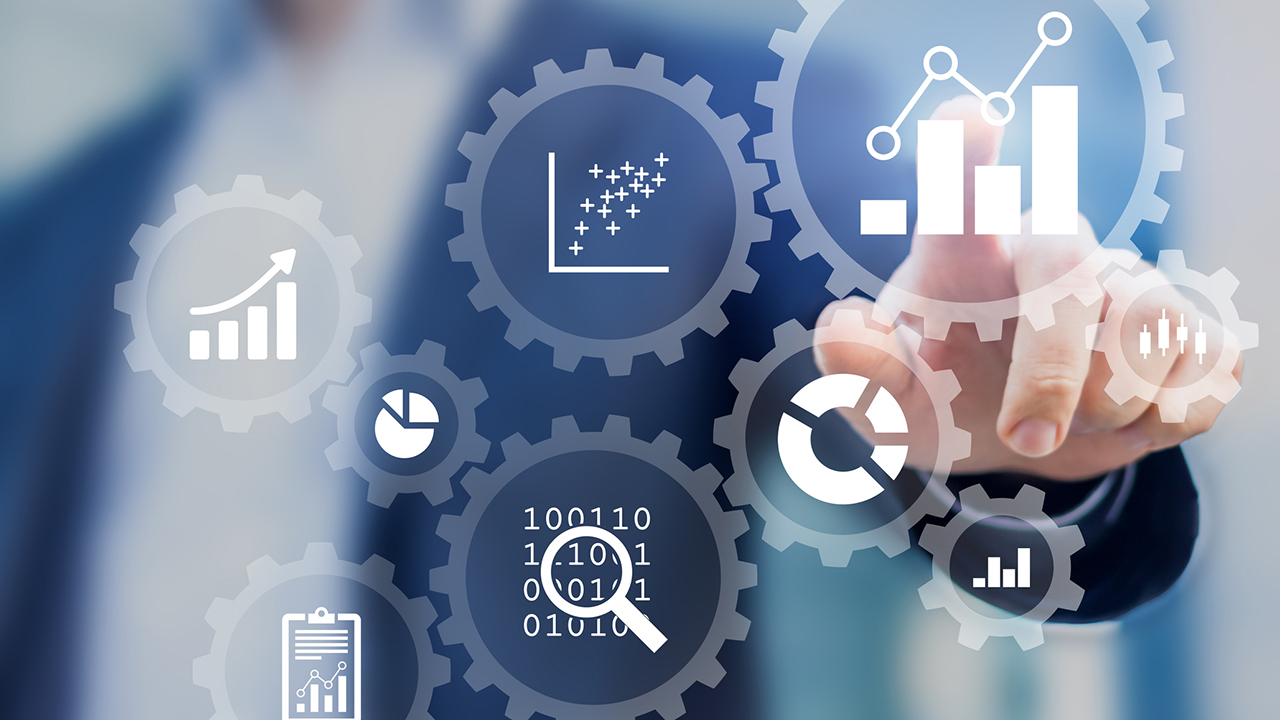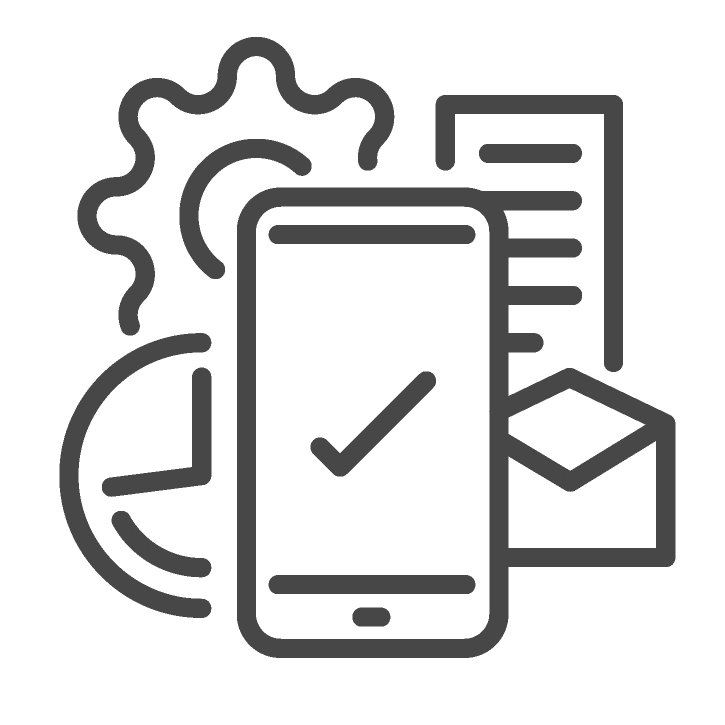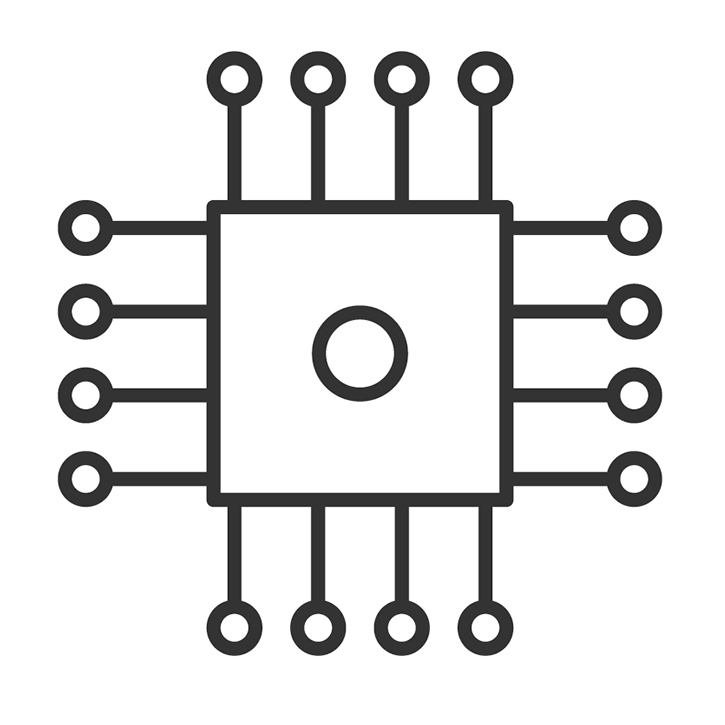Few events in our lifetimes will rival the profound impact of the COVID-19 pandemic. Around the world, nations, businesses, and citizens have seen many facets of their lives turned upside down. The increased demand for data insights and remote access – across every business, industrial and government landscape – has created the conditions for accelerated adoption of technologies and automation that rely on the Internet of Things.
The reasons for this phenomenon are many. We need the ability to connect, meet and work with others, without being physically together. Businesses, medical professionals and governments need critical insights that can be delivered rapidly via connected devices and high-speed networks. First responders need to quickly nagivate cities with reliable communications and supporting
traffic management solutions that can efficiently redirect vehicles on roadways. In this article, we will explore several examples, and how IoT delivers.
The Internet of Things: The Right Place at the Right Time

A study performed by Vodafone in May, 2020, called the
IoT Spotlight Report, sought to explore how the pandemic was impacting the need for connectivity. It polled leaders in a range of industries from the United States, Brazil, Germany, Ireland, Italy, China, Japan, Singapore, South Korea, India, South Africa and the United Kingdom.
The results were enlightening. For example, the study found that "86% of respondents said IoT has changed the way they approach analytics and the value of data and 87% agree their core business strategy has changed for the better as a result of adopting IoT." The fact that networks are continually advancing in speed, reliability and availability, and connected products are harnessing that speed and throughput, is an enormous boon to those seeking to deploy connected solutions, gather critical data and respond.
Sensors can capture data, and cloud-based services can transmit that data to help automate the people-intensive tasks that keep the economy moving to the greatest extent possible. That can include everything from quickly checking the body temperatures of visiting customers to monitoring the cargo temperature of food and pharmaceuticals in transit to sending work tickets when actions need to be taken.
IoT can improve healthcare through telemedicine, provide visibility into every aspect of the supply chain, and reduce the need for physical contact to get things done. The results range from increased public health and more robust economic activity for individuals and businesses to the ability to make real-time decisions about events happening far away and then remotely execute on those decisions.
Connected Health: Mobile Healthcare/Wellness Monitoring

Throughout the COVID-19 pandemic, following the recommendations of public health officials and healthcare experts, many people have postponed routine healthcare encounters such as annual physicials, screenings, and non-urgent conditions. While this has been essential to help prevent overloading clinicians and institutions during critical months, experts agree that such care cannot be postponed indefinitely.
Telemedecine solutions combining hardware, software, and connectivity are bringing patients and physicians together in new ways to improve public health. Digi solutions connect hospitals, medical practices, and other health facilities with remote patients at home – with complete security and HIPAA compliance – for rapid care and better patient outcomes. Here’s how Digi brings remote telemedicine to life:
- Real-time remote monitoring: Easily transmit data to and from devices and provide diagnostic services.
- Equipment reliability and longevity: By connecting critical assets, Digi enables a new level of insight into clinical operations, making it easier for medical staff to monitor and maintain critical equipment.
- Access to remote systems: Get real-time access to home health systems with easy-to-deploy cellular router solutions.
- Faster time-to-market: Accelerate medical device development time significantly with intelligent ARM-based systems and certified RF solutions.
- Lower operational costs: Reduce maintenance and increase efficiencies by using wireless systems and sensors in remote locations.
Secure, reliable network performance has never been more critical to healthcare delivery. Data integrity is a big responsibility when life and health are at stake. Digi’s
enterprise routers and gateways provide the secure, reliable connectivity for critical data transfer.
Contact Tracing: Stopping the Spread

One of the key responses to the COVID-19 pandemic has been the implementation of
contact tracing to track the spread of the virus and inform citizens of exposure so they can take prompt action. Contact tracing can protect workers, students, and others by identifying small outbreaks and preventing them from growing into larger clusters.
The IoT can play an instrumental role in contact tracing. Sensors can capture high volumes of granular data using MAC addresses from (opted-in) mobile devices in the vicinity. Subsequently, cellular routers can securely direct that data through the cloud to centralized servers where sophisticated analytics can identify risk exposures, pinpoint potential hotspots, and deliver predictive insights.
Monitoring and Delivering Vaccines and Medications: The Cold Chain

The IoT and machine-to-machine communication play vital roles in the supply-chain challenge of distributing a COVID-19 vaccine around the world. Vaccines and pharmaceuticals to prevent and treat the virus not only require mass distribution on a global scale, but they are temperature-sensitive. Automated tools – such as sensors to monitor temperatures and humidity conditions and ensure the integrity of the sensitive material from the lab all the way through to the patients – are therefore mission critical.
SmartSense by Digi solutions provide real-time temperature monitoring solutions, critical insights and alerts, and task management in labs, pharmacies, hospitals and the vehicles that transport these vital materials around the world. These solutions are part of a supply chain term known as the “cold chain.” Digi solutions help support the CDC Guidelines for Vaccine Storage (2016), along with the various Board of Pharmacy standards and Department of Health Vaccine For Children requirements.
Using easy-to-install hand-held probes, wireless sensors, gateways and software, pharmaceutical makers, transportation providers, and healthcare organizations can automatically monitor and log temperature data to preserve the integrity of vaccines. Digi solutions can capture temperature data every 15 minutes, not simply when they arrive at a destination, and automate report generation to eliminate tedious manual processes and inaccuracies.
Working from Home: Security is Paramount

Perhaps the most pervasive trend resulting from the pandemic has been the explosive growth in the number of people working remotely. The Vodafone report found that "84% of the companies felt the Internet of Things (IoT) had ensured business continuity for them during the pandemic. It helped them to remain connected to their customers, suppliers and employees."
This was certainly true at Digi, where our entire staff quickly shifted to a
work-from-home model. This required reliable networking solutions with secure VPN for all employees, as well as remote systems management tools and cloud solutions for team communications, and our IT team was ready.
The challenge facing many companies with a remote workforce today is that consumer/residential Wi-Fi doesn’t meet corporate standards for protecting proprietary data and confidential internal communications. The most robust solutions provide a centrally managed cellular connection for workers that is highly reliable, secure and robust.
It’s a tall order that’s placing an enormous strain on corporate IT departments as they struggle to support remote workers with reliable connectivity while managing heightened security risks. Businesses, schools, and government agencies alike all need comprehensive approaches encompassing everything from physical security and multi-factor authentication to virtual private networks and connectivity for remote locations. What’s more, they also need solutions to efficiently and remotely manage it all.
Digi’s cellular extenders deliver connectivity that is provisioned and managed by corporate IT – complete with encryption, firewall, and VPN capabilities and a variety of security protocols. That means employees can continue to do business as usual without any online safety or security risks.
Emergency Response and Traffic Management

With heightened awareness of public emergencies, the need for clear communications for first responders and the ability for them to efficiently navigate city streets has come into sharp relief. This is another rapidly growing area for IoT.
Digi FirstNet Ready™ cellular routers can provide the communications for centralized traffic management to keep traffic flowing and emergency lanes open, as well as deliver priority and pre-emptive communications for first responders. Meanwhile,
Digi Remote Manager® provides the management platform to keep tabs on every device, perform mass firmware updates, and securely reach other remote devices, out of band, for troubleshooting.
In 2020,
New York City completed rollout of a massive IoT project. Their award-winning intelligent traffic management system involved deployment of Digi cellular devices at every street corner across all five boroughs. Click the link to learn more about the project and their Outstanding ITS Project of the Year Award.
The ROI of IoT and What's Next

One of the most important revelations for businesses, industries, governments and medical institutions is that there is significant potential
ROI in implementing an Internet of Things strategy. The Vodafone study reported that "IoT continues to generate real business value with 95% of respondents seeing a positive return on investment. The benefits of IoT fall into two main areas; improving operational efficiency and creating new connected products and services." Let's look at both of these use cases.
IoT and Operational Efficiency

With IoT, manual processes can be automated. Workers can be focused on result-producing activities instead of tedious data analysis, manual reports or driving from one deployment location to another just to check on systems that are working fine. These are the tasks where IoT shines, and where humans tend to be inefficient, expensive and error prone.
Not only that, but as
OTIS elevator and other equipment-based companies have discovered, deploying IoT solutions for predictive maintenance means that data comes to you, in the right form and at the right time. Workers can be notified of events that can cause break-downs before they occur, and the IoT solution can be integrated with business systems to trigger processes such as work orders.
Solutions such as these are driven by connected solutions such as
cellular routers, along with IoT management solutions such as
Digi Remote Manager®, which provides insights, security management and the ability to remotely monitor and update networks of any size.
IoT and Connected Products and Services

Connected products, as we've discussed, provide data insights fast – where and when you need them. They enable
edge computing, which creates network efficiencies and can ensure only critical data is routed to workers and administrators. And they trigger important processes that would otherwise require a human being to be in the right place at the right time.
This important functionality is a driver behind adoption of IoT across every industry today, from healthcare to farming to smart cities applications, industrial automation, traffic management and transit systems.
Consider, for example, these
Digi customers who have developed innovative applications to support a range of needs:
- Floorbotics designed an automated floor sanitizing solution for medical facilities
- Clean Hands Safe Hands built an innovative IoT solution for hand hygiene in healthcare
- bioFeeder developed an application to automate feeding schedules on shrimp farms
- eGEAR created an energy management controller to optimize solar power usage
- rmoni developed a solution for remote monitoring of perishable goods
- Schréder developed a city lighting solution to reduce energy use and maintenance costs
It all starts with
embedded solutions and IoT application development tools designed to help accelerate development and time-to-market.
What's Next in IoT
 The Internet of Things is still young, and the growth is massive. In fact, more and more we will hear the term "massive IoT" as networks of connected devices become larger and more ubiquitous and the supporting technologies such as AI, machine learning and 5G mature.
The Internet of Things is still young, and the growth is massive. In fact, more and more we will hear the term "massive IoT" as networks of connected devices become larger and more ubiquitous and the supporting technologies such as AI, machine learning and 5G mature.
Fortune Business Insights recently made the following predictions related to the growth of IoT: "The global Internet of Things (IoT) marketplace stood at 250.72 billion in 2019 and is projected to reach 1,463.19 billion by 2027, exhibiting a CAGR of 24.9% in the forecast period."
Some of the true driving factors are the efficiencies, cost savings and other ROI metrics that a range of enterprises and industries can realize through the reduction of manual processes, reduced resource usage and predictive maintenance to avoid costly downtime or even catastrophic equipment failures.
Additionally, there is market need. And the COVID-19 pandemic has demonstated the importance of problem-solving connected solutions – like no-touch and low-touch interactive displays, hands-free retail payment processes and transportation turnstiles that eliminate the need to touch surfaces. Industry 4.0 and automation will also massively drive adoption. Developers have an enormous opportunity to be a part of these trends.
Digi Can Help Define, Develop and Deploy Your Connected Solution
Seeking to embrace next-gen technology for your business or municipality?
Contact us. A Digi expert can help you identify the goals for your design or deployment, complete site surveys, and procure all of the components needed. Our teams even provide expert wireless design, application development and deployment services.